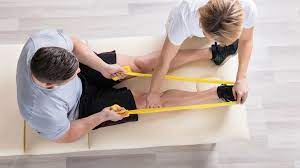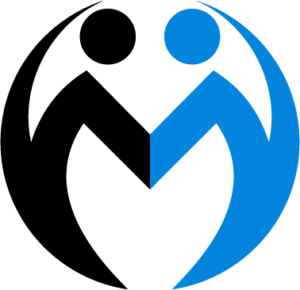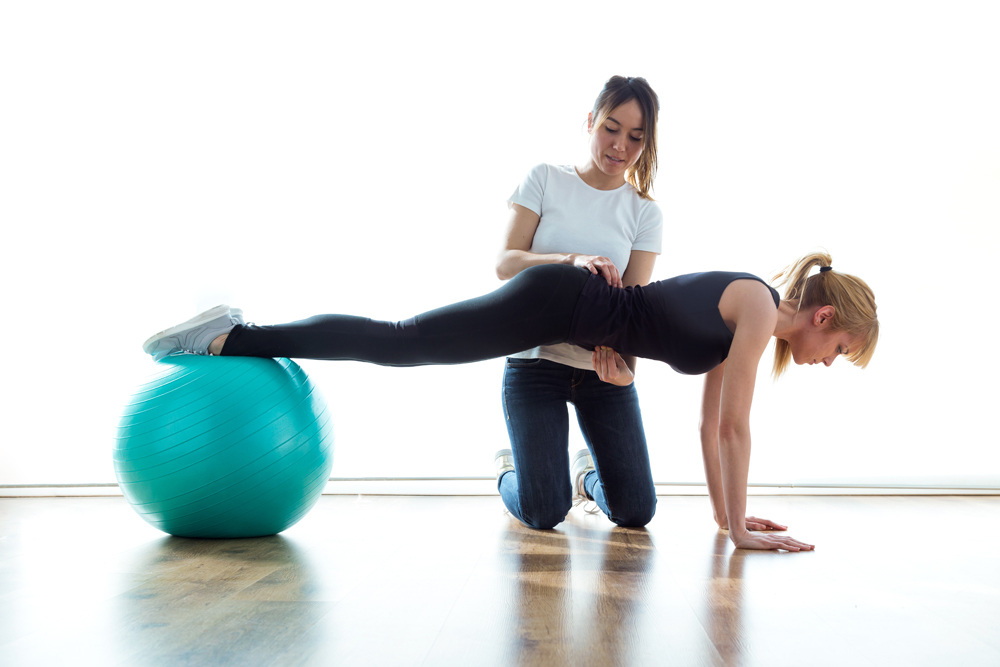Active rehabilitation is just what it sounds like. Clients aren’t being manipulated, but they are moving around during their sessions. Active rehab clients stretch, roll, and do exercises during their sessions. This is different from passive treatments like physiotherapy or chiropractic care. Kinesiology is the study of how people move, so the best people to oversee active rehab are kinesiologists. The team at Active Rehab services in Abbotsford is so friendly and professional; from the administration staff, to the principals, and to my physiotherapist.

Active rehab is a medical treatment that is backed by evidence and can be used for a long time. It is meant to help injured soft tissue, joints, muscles, and the nervous system heal faster.
When active rehab services in Abbotsford are evidence-based, it means that it is based on science and that specific movements are tested using strict scientific scrutiny. There is a lot of evidence that these good things happen when active rehab is used to treat injuries and pain.
Active rehab can be hard work. A kinesiologist must watch over clients to make sure they are not only being challenged in the right way but also that every movement and exercise is done correctly and effectively. The kinesiologist will help the client set a baseline for their range of motion, flexibility, and strength. They will also help the client set goals and a treatment plan to help them reach these goals as quickly as possible.
ICBC Active Rehab
Active rehab services in Abbotsford are one of the ways that ICBC clients in Abbotsford who have been in a car accident can get help ICBC knows that kinesiology and active rehab are important parts of getting better after an auto accident. ICBC’s new rules for car accidents that happened on or after April 1, 2019, mean that people can start active rehab sooner.
ICBC is moving away from litigation and toward a client care model. In the past, clients had to get approval from their doctors and their adjusters before they could start active rehab. This often slowed down treatment and forced many clients to hire a lawyer to fight for their health.
ICBC clients are pre-approved for 12 active rehab sessions within 12 weeks of their car accident, and they don’t need a referral from a doctor to start active rehab (though a note from a doctor is usually recommended). These changes affect open claims for accidents that happened after April 2019 but within the last 12 weeks. When people start rehab sooner, they can set goals, make a treatment plan, and recover from injuries more quickly.
ICBC Active Rehab is all about giving clients more control over their lives. Programs can last anywhere from three months to a few years, depending on the situation, setbacks, and how fast progress is being made. The kinesiologist in charge of the program will look at how well it works and how long it lasts. During each session, the kinesiologist gives the client cues, trains them, and helps them stay motivated. So, clients can take an active role in their recovery, regain control of their bodies, and get them to work at their best. An active rehab service in Abbotsford program is over when the clients have made as much progress as they can and can keep going on their own.
Active Rehab Helps Clients With
- Motor vehicle accident injury (ICBC active rehab)
- Lower back pain
- Neck and shoulder pain
- Long term disability
- Chronic pain
The types and severity of injuries caused by a car or motor vehicle accident (MVA) vary, but soft-tissue injuries are the most common and widespread. Most people don’t know how painful muscles can be, so they think their pain is caused by damage to their bones, joints, or nerves. Muscles that hurt are caused by inflammation and stiffness. This is the body’s way of protecting itself from more damage. Most of the time, the healing process is slowed down not by actual tissue damage but by our worries about pain. This is because people who have been in an accident tend to be overprotective and stop moving around.
This is a common and understandable way to protect yourself, but clients who are able to exercise need to move to get back to their previous level of function. The goal of an active rehab program is to move and relax our muscles and get them back to working in a healthy way. For safety, kinesiologists use a standard questionnaire to make sure their clients can exercise. If they aren’t sure, they always go with what a doctor or referring physiotherapist says.
Kinesiologists recommend exercises with different goals, such as building strength and stamina or controlling muscles in a more precise way. For example, if you have lower back pain, strengthening the muscles in the lumbar area, which is part of the core and connects to the spine, will help the spine stay strong. Core stability exercise can be thought of as making the muscles better able to control the spine and keep it from getting hurt or getting hurt again (Hodges, 2003). Another example is getting rid of chronic neck pain by giving us more room to turn, bend, or lift our heads without pain (Ylinen, 2003).
The goal of active rehabilitation is to make weak, easily damaged parts of the body more stable so that they are less likely to get hurt again. By making these areas stronger, active rehab also helps reduce how much surrounding muscles have to do extra work.
By learning to use more of their core or deep neck muscles, people gain more confidence when doing everyday things like sitting for long periods of time, standing up, kneeling down, crouching, squatting, or carrying.
People who have been hurt in a car accident can’t hear enough good things about active rehab. Active rehab has a number of long-term benefits, such as:
- Muscles with less scar tissue
- heart and lung function got better
- Bone density got stronger
- Less likely to get hurt when trying new things.
- Less a chance of getting hurt when you fall.
- Increased stamina in leisure activities
- Less tiredness when doing day-to-day things
- Confidence and self-efficacy go up
- More energy and a faster metabolism

